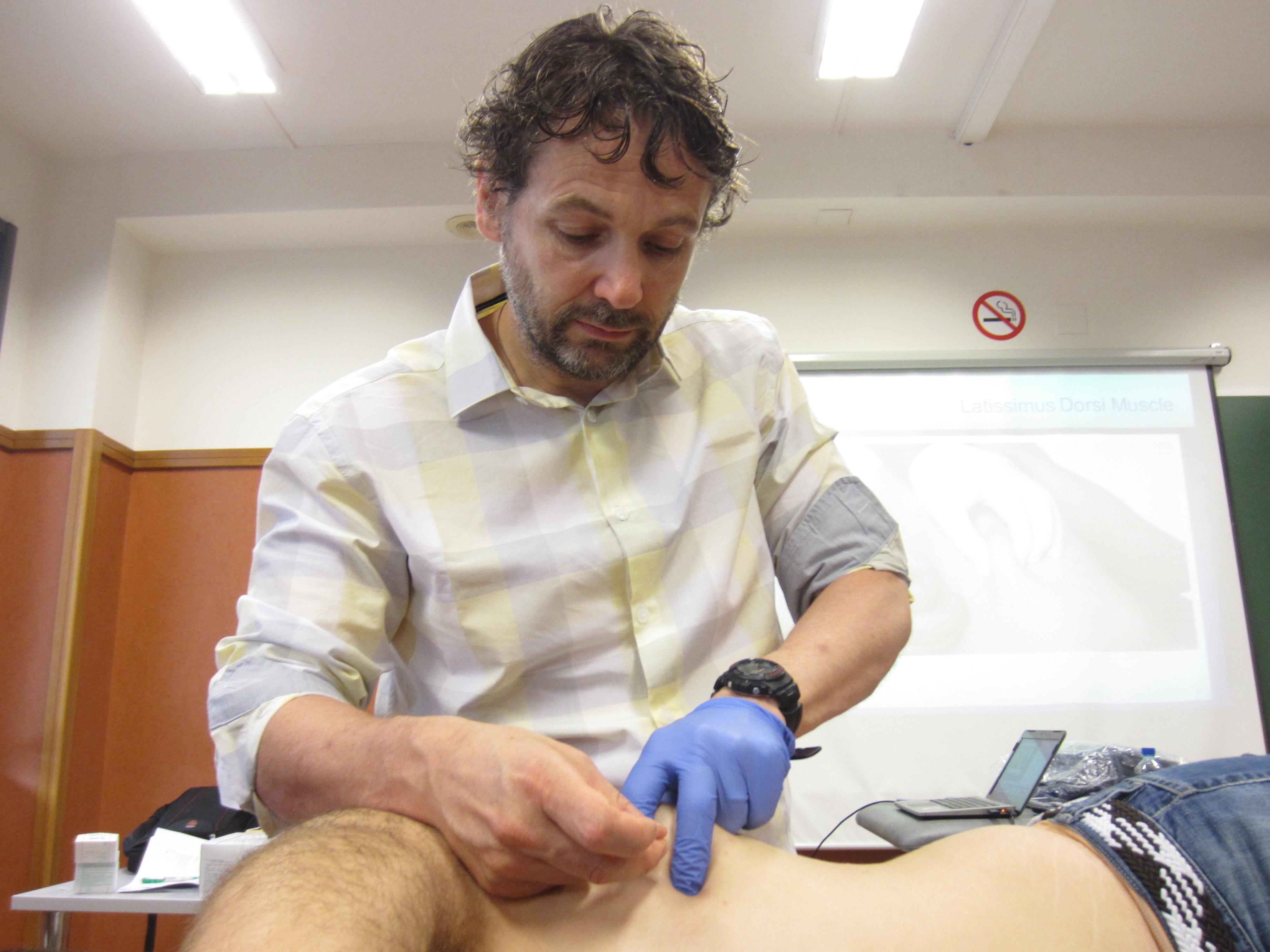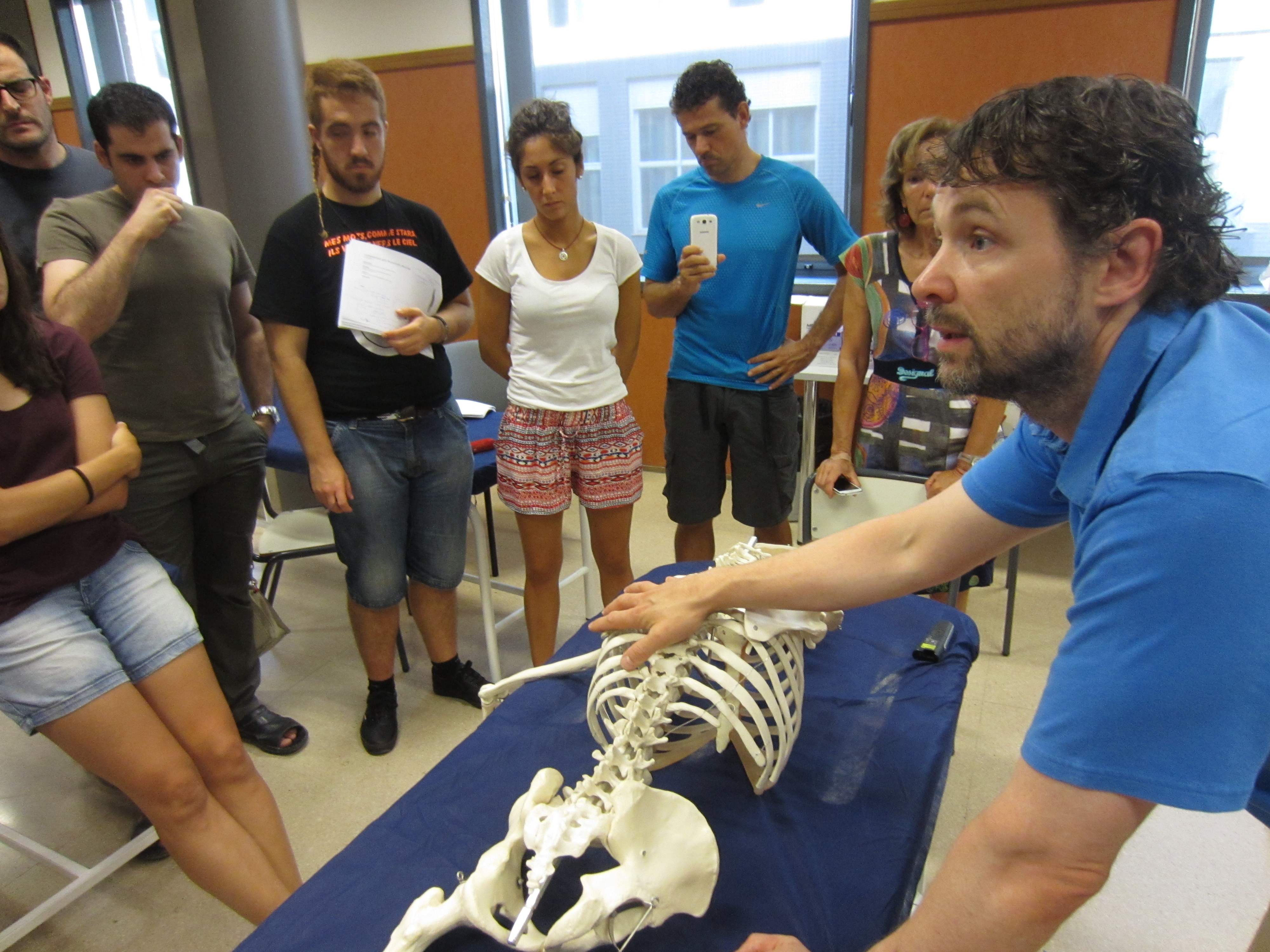Students of our Master Degree in Sports & Exercise Medicine attended an Open Class by world-renowned physiotherapist Dr. Johnson McEvoy, expert in dry needling. With this class, students were taught to identify trigger points and to use the dry needling technique efficiently, a very common treatment in myofascial pain.
Dr. Johnson McEvoy teaches at University of Limerick (Ireland) and is head of the United Physiotherapy Clinic of Limerick. He has a wide experience in dry needling in Ireland and the United States, and we have asked him a couple of questions to know a little more about this technique!

Q. What is a trigger point?
A. A trigger point in myofascial pain is a small contracted knot within the muscle that can lead to pain and it’s normally associated to a dysfunction of the muscle. It is a localized contraction within the muscle, it is not spasm of the whole muscle. A lot of research has got into delineating the signs behind trigger points, especially over the last 20-30 years, and the research is growing rapidly. Myofascial trigger point pain is very prevalent; up to 70-80%of patients with shoulder pain will show myofascial pain within one muscle, 96% on patients with low back pain and up to 95-96% on chronic patients.
Q. What is dry needling?
A. Dry needling is a treatment for myofascial trigger points. It is an injection therapy. The doctor who treated J. F. Kennedy realized years ago that it was not the treatment itself, the anesthetic she was injecting in the muscle to numb it, but the effect of the dry needle. In her autobiography she talked about this and said she tried to separate the effect of the dry needle from the injectable substance. In 1979, a doctor from the Czech Republic did the first proper medline sighted article on dry needling and called it “The needle effect”. The needle has a profound effect on the spasmodic area within the trigger point, decreasing chemicals which are associated with the contraction and the pain.
Q. What kind of problems can be treated with dry needling?
A. Dry needling can address myofascial pain and can restore function to the muscle, improve strength, modulate pain; perhaps treating scar tissue and associated problems which are commonly seen in physical medicine.

Q. Which are the possible side effects of dry needling?
A. With dry needling possible side effects we have done a study due to be published this year looking at 7500 treatments. All side effects in that study were minor: bruising, a little bleeding, posturary soreness…nothing uncommon with other treatments in Physiotherapy anyway. So minor adverse effects are possible but out of those 7500 treatments, none of the patients required any medical attention. There are more significant adverse effects that appear to occur very irregularly, when the treatment is carried out by the wrong hands: pneumothorax, for instance. Good technique, good practice reduces the risks to extremely rare.
Q. What is the purpose of this Open Class?
A. The main objective is to teach students to be good dry needlers, to be extremely safe and to have a good approach to patient care; how to identify trigger points and how to treat them adequately with dry needling. Dry needling is growing rapidly and I think that Spain is one of the primary countries within dry needling, not just in terms of the number of Physiotherapists dry needling but also the research coming out of Spain. So it has become a widespread treatment among Physiotherapists. So the objective is to teach the best techniques, the safest techniques and the most efficient ones.
At CEU Cardenal Herrera University we will continue to bring major experts and international researchers in different fields to make them share their knowledge with our students and alumni.
Interested in studying Physiotherapy with us? Intéressé(e) par notre diplôme en Kinésithérapie?






